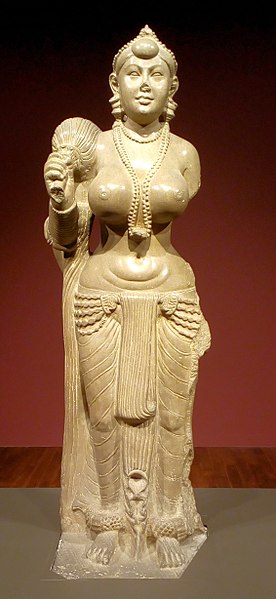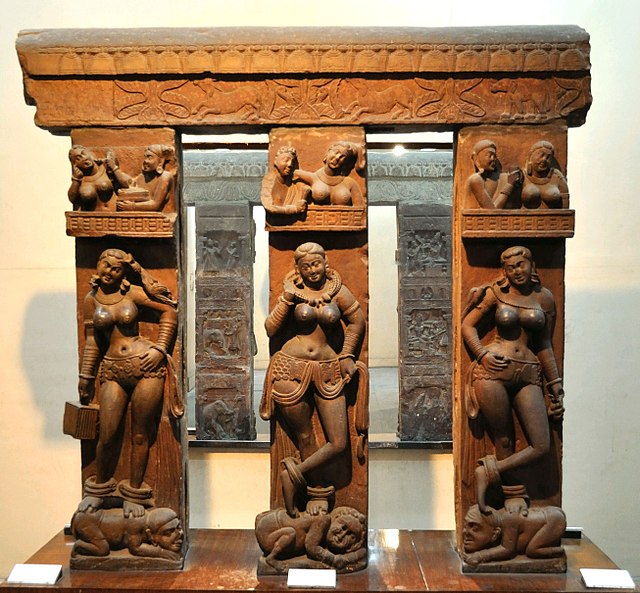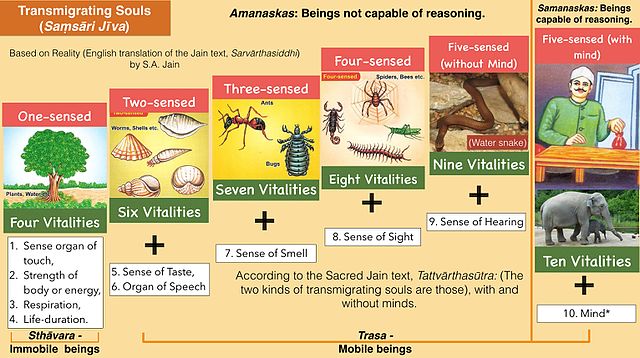Yakshinis or Yakshis are a class of female nature spirits in Hindu, Buddhist, and Jain religious mythologies that are different from Devas and Asuras and Gandharvas or Apsaras. Yakshinis and their male counterparts, the Yakshas, are one of the many paranormal beings associated with the centuries-old sacred groves of India. Yakshis are also found in the traditional legends of Northeastern Indian tribes, ancient legends of Kerala, and in the folktales of Kashmiri Muslims. Sikhism also mentions yakshas in its sacred texts.
Didarganj Yakshi 3rd century BCE – 2nd century CE Patna Museum, Patna
The Bhutesvara Yakshis, Mathura, 2nd century CE.
Yakshi under a flowering asoka tree. Shunga, 2nd–1st century BC, India
A Yakshin, 10th century, Mathura, India. Guimet Museum.
Jainism, also known as Jain Dharma, is an Indian religion. Jainism traces its spiritual ideas and history through the succession of twenty-four tirthankaras, with the first in the current time cycle being Rishabhadeva, whom the tradition holds to have lived millions of years ago, the twenty-third tirthankara Parshvanatha, whom historians date to the 9th century BCE, and the twenty-fourth tirthankara Mahavira, around 600 BCE. Jainism is considered an eternal dharma with the tirthankaras guiding every time cycle of the cosmology. The three main pillars of Jainism are ahiṃsā (non-violence), anekāntavāda (non-absolutism), and aparigraha (asceticism).
The 58.8ft high monolithic statue of Bahubali built in 981 CE
Classification of Saṃsāri Jīvas (transmigrating souls) in Jainism
Rebirth loka (realms of existence) in Jain cosmology.
Division of time in Jain cosmology.








